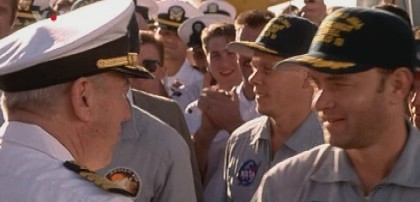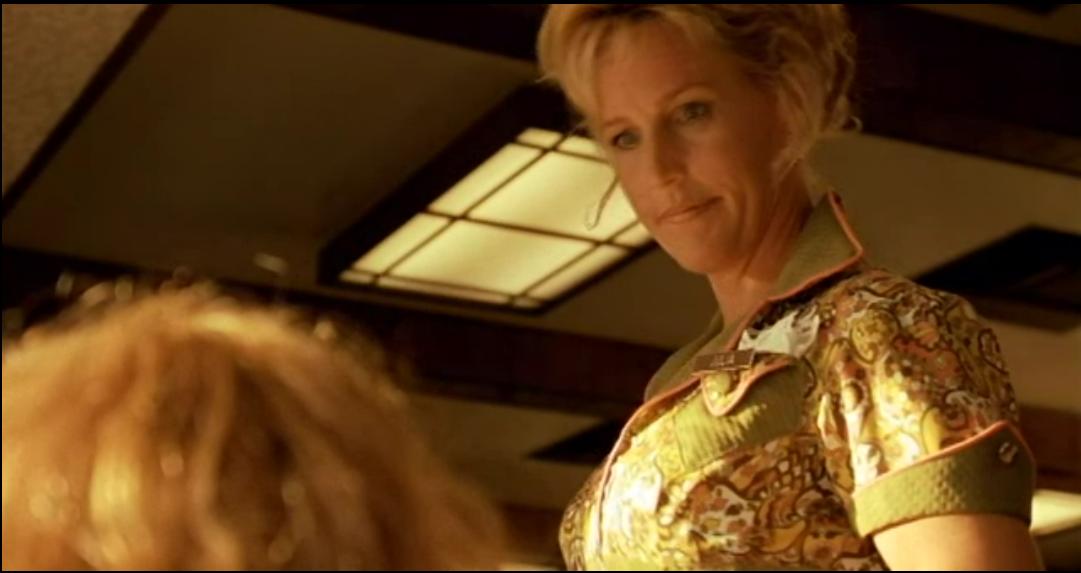
There's something special about an unexpected cameo movie moment; watching celebrities like Neil Patrick Harris or Mike Tyson play humorously warped versions of themselves in Harold and Kumar or The Hangover tickles our collective fancy in a way that few comedic situations can. Whether the celebrity is playing a version of themself or another bit part entirely, the element of surprise is usually enough to bring us on board with the choice and applaud the creativity and wit of the casting team.
It's the old It's a Mad, Mad, Mad World trick. For those of you out the who never saw the classic 1963 comedy, it featured cameos from what seemed to be every comedian living at the time of filming. It seemed their attitude was if one guest star can bolster the humor, hundreds will make it rip-roaringly hilarious.
There's some debate over what constitutes a cameo. Certainly playing yourself will get you a bona fide cameo credit, but what about appearing onscreen in a small unpublicized role? The jury's not quite in on that one, but for the sake of enjoying these moments at face value wihtout nitpicking over pop culture afficionado sense of superiority-building details, we'll include them in our list.
For your convenience, cameos have been arranged by arbitrary types. These aren't industry standard labels; in fact, I just made them up. That said, you're welcome to use them as you will in everyday conversation...but only if you end that conversation with a hearty endorsement of www.childrenofthenineties.com. You've got to say the whole URL or else face some serious copyright infringement allegations. Sorry, I looked into it. The regulations are airtight.
The "In" Joke
This type of cameo usually has some sort of underlying punchline that's not overtly stated, but it amusing if you know what you're looking at. If done well, it's meta-comedy at its finest. There's a lot of potential for flopping here, so any movie that pulls off the trick deserves some major accolades.
Martin Sheen in Hot Shots Part Deux
This is pure genius on so many levels. The reference to Martin Sheen's roles in Platoon and Apocalypse Now! combined with the shout out (literally) for their joint film Wall Street. This is the ultimate meta-reference cameo. It just goes to show, when it works, it works.
Don Ameche and Ralph Bellamy in Coming to America
Okay, okay, so sue me; this isn't technically from the 90s, but I love it so much that 1988 will have to be close enough to make the list. Also, the quality of the clip is atrocious, but it's something you can willingly overlook in the name of good crossovers. Ameche and Bellamy reference their roles as Randolph and Mortimer in the earlier Murphy vehicle Trading Places. The cameo is just brief and fleeting enough to be likable.
The Out-Of-Left-Field Whammy
These appearances present a picture totally and inexplicably out of sync the actor or celebrity's perceived character. They're not playing themselves (see "The Extras Approach" below), but they're playing a character as whom we wouldn't have thought to cast them.
Bob Saget in Half Baked
For those of us unfamiliar with Saget's raunchier stand-up, this was the ultimate out-of-left field whammy. Danny Tanner would never say this. Interestingly enough, the line is dubbed for cable TV as Saget saying he sucks "feet" for coke. That actually just made it so much worse.
Dave Letterman in Cabin Boy
I'll say up front, this is not a great movie. It's not even a good movie. This cameo, in fact, is probably Cabin Boy's only major redeeming feature.
Dave Letterman as...salty fisherman? It just doesn't add up. His acting is nothing to write home about, but there's something legitimately funny about this scene. Unfortunately, that's something of an anomaly for Cabin Boy. Writer and star Chris Elliot was a former writer on Letterman's show, so it's only fair for him to give his old boss his due by letting Letterman call him a "fancy lad."
Mel Gibson in Fathers' Day
It's official...no footage of this cameo exists online in any visual aid-style format. You'll just have to watch the movie for yourself.
Well,at least it was out of left field when we still knew Gibson as a heartthrob leading man and not a religious enthusiast with occasional tendencies to spew anti-Semitic remarks and refer to waitresses as "Sugar Tits." I believe Gibson is credited as something like "pierced guy" in this movie.
Elvis Costello in Spice World
Actually, make that Elvis Costello, Elton John, Meatloaf, Bob Geldof, Anthony Hopkins...what exactly are all of these respectable people doing taking bit parts in Spice World? It baffles the mind. Perhaps they were all just serious supporters of girl power.
Alanis Morissette in Dogma
This technically could also be characterized as The Big Surprise, particularly because it comes close to the end of the movie. The Out-of-Left-Field Whammy on this one is that apparently Kevin Smith thinks the celebrity who best exemplifies godliness is Alanis Morissette. It's a little bit ironic, don't you think? By her standards, I mean. Not in the actual sense of irony in its proper usage.
The Big Surprise
We don't know why exactly they're there, but we're thankful they showed up. This sometimes requires a double take to determine the star's identity, usually because either a)they are in disguise b)their appearance was unadvertised and unexpected or c) it is really, really unlikely that they would agree to this.
Billy Crystal in The Princess Bride
Some might argue this is more of a small role than a cameo, but Crystal's disguised appearance tilts my judgment more toward a Big Surprise cameo.
Charleton Heston in Wayne's World 2
Really? Charleton Heston in Wayne's World 2? Really?
Christopher Walken in Pulp Fiction
This is a great movie and a great scene. Walken owns this cameo, if you want to classify it as such. It's just one of the best. Short but utterly memorable.
Alec Baldwin in Glengarry Glen Ross
Remember when Alec Baldwin used to play serious roles? There's some debate as to whether his brief seven minute appearance in the film constitutes a cameo or just a bit part, but there's a general consensus about his skill and adeptness with the role. Geez, he was skinny here. To his credit, though, he's still got that hair.
The Extras Approach
If you've never seen the HBO series Extras, here's a quick run-down of the premise. A celebrity plays a twisted tongue-in-cheek version of him or herself that doesn't usually mesh with their public persona.
Billy Idol in The Wedding Singer
I can only hope that if I ever get bumped to first class, Billy Idol will introduce me over the mike. He's such a badass. Idol still pulls off his 80s look so many years later. Well, sort of. At least as much as he did the first time around.
Bob Barker in Happy Gilmore
I always knew Barker had it in him. Barker beats up Happy Gilmore when they're unfortunately paired for a celebrity golf tournament, and let me tell you, it is awesome. Bob Barker is such a sport for agreeing to this completely ridiculous cameo.
Brett Favre in There's Something About Mary
Geez, Favre has been around a long time. I used to have a huge crush on him, which was taboo for me as a Vikings fan. Luckily, now I have a legitimate license to swoon over this scene. Favre is actually pretty funny, here, too. Sometimes these athlete cameos fall flat, but he works it smoothly.
The Good Sport
Whether you're the subject of a biopic or forced to endure a questionable remake of a film you starred in years earlier, these lesser-noticed cameos prove their subjects to be good sports about the whole ordeal.
John Lovell in Apollo 13

I couldn't find a better still or video clip, but the back of that navy captain's head is the real astronaut Mr. John Lovell himself, congratulating his fictional biopic self (Tom Hanks). After all he went through, he absolutely deserves some screen time. And, you know, a whole movie detailing the failure of his mission. That would work, too.
Erin Brockovich in Erin Brockovich

The real Erin Brockovich appears in her eponymous film as waitress wearing a nametag bearing the name "Julia." Get it? Because Julia Roberts is playing her? What will these writers come up with next?
Larry Flynt in People vs. Larry Flynt
Yep, that's Flynt himself at 1:01, filling in a cameo as the judge in the movie about his own life. Like most Good Sport cameos, it's a brief one, but it's a respectable nod to the man himself.
These scenes won't usually make or break a movie, but they do have the power to entertain us on a totally unexpected level. A cameo is like a little surprise party; you go in expecting things to be business as usual, and then the unforeseen kicks in and spices it up. Whatever the style or reason behind these bit roles, you've got to appreciate the celebrity's willingness to play along. More often than not, their few minutes onscreen will be the ones we go on to remember.






